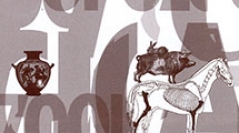

 Anthropozoologica
42 (2) - Pages 9-40
Anthropozoologica
42 (2) - Pages 9-40Beginning with a critical presentation of Sherratt's model of the "secondary products" revolution, the authors review the most recent biochemical, isotopic and palaeogenetic evidence for early Neolithic milk exploitation in Europe. They suggest that there was a wide development of dairying which occurred much earlier than the "secondary products" revolution. Then they focus particularly on the osteoarchaeological evidence for the Near East and Mediterranean Europe. Using recent improvements in archaeozoological techniques for constructing and interpreting slaughtering age profiles which reflect animal management strategies, they analyse 36 sheep and goat and 17 cattle harvest profiles. They provide clear evidence for milk exploitation of sheep and goats as early as the first advances of the Neolithic in both regions, and strongly suggest that special management practices existed for cattle dairying. Altogether, these data indicate that dairy products were already part of the diet at the very beginning of the Neolithic process, and therefore should have played a role in the earliest Near Eastern domestication processes and in their spread to the Mediterranean basin. This evidence and its interpretation suggest that the Pre-Pottery (PPNB) Neolithic villagers were able to develop special technical innovations for the exploitation of early domestic animals as early as the mid 9th millennium BC, when they were still "stock-keeping hunter-cultivators" rather than true farmers. This leads the authors to argue against the image of the last hunters having a low level of technical skills for animal management. Although still partly valid, the "secondary products" revolution hypothesis should be thoroughly revised. The terms "primary products" and "secondary products" should themselves be questioned: the authors propose to replace them with "final products" and "ante mortem (life time) products", respectively.
Neolithic, milk exploitation, dairying, “secondary products”, slaughtering profiles, Near East, Mediterranean Europe, PPNB.